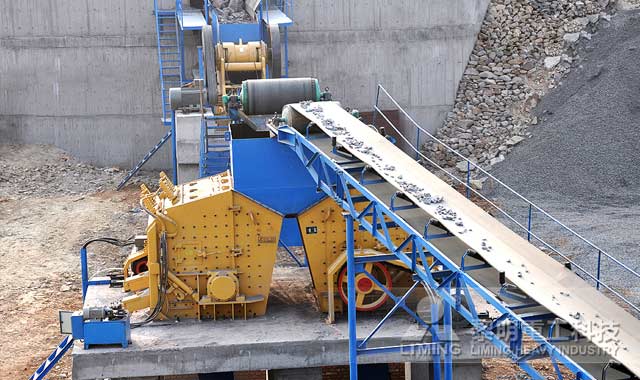Mining operations require efficient and reliable crushing equipment to process raw materials into manageable sizes for further processing or transportation. Stone crushers play a crucial role in mining by reducing large rocks into smaller fragments, facilitating easier handling and extraction of valuable minerals.
Understanding Stone Crusher in Mining
A stone crusher is a machine designed to reduce the size of rocks, stones, and ores into smaller, more uniform pieces. The choice of crusher and its configuration directly impacts productivity, operational efficiency, and product quality in mining projects.
Types of Stone Crushers Commonly Used in Mining
-
Jaw Crusher
Ideal for primary crushing, the jaw crusher uses compressive force to break down large rocks. It has a fixed jaw and a moving jaw that moves back and forth to crush materials. -
Cone Crusher
Used primarily for secondary or tertiary crushing, cone crushers apply a squeezing force to crush material into finer sizes. They are suitable for medium to hard rocks. -
Impact Crusher
These crushers use impact force to shatter stones, making them effective for softer or less abrasive materials. They are typically used in secondary crushing stages. -
Gyratory Crusher
Similar to jaw crushers but with a conical head and a circular motion, gyratory crushers are suited for high-capacity primary crushing.

Stone Crusher Configuration for Mining Operations
Configuring a stone crusher system depends on the specific mining application, material type, required capacity, and desired output size. Here are key factors and common configurations:
1. Primary Crushing Stage
-
Equipment: Jaw crusher or gyratory crusher
-
Purpose: Reduce large boulders from the mine to a manageable size
-
Configuration:
-
Large feed opening for bulky raw material
-
Heavy-duty construction for durability
-
High capacity for handling maximum throughput
-
2. Secondary Crushing Stage
-
Equipment: Cone crusher or impact crusher
-
Purpose: Further reduce the size of primary crushed material
-
Configuration:
-
Adjusted crushing cavity to optimize output size
-
Adjustable settings for different product sizes
-
Integration with screening equipment to separate sizes
-
3. Tertiary Crushing and Screening
-
Equipment: Fine cone crushers, impact crushers, and vibrating screens
-
Purpose: Produce the final product with consistent size and shape
-
Configuration:
-
Fine tuning of crusher settings for product quality
-
Multi-stage screening to classify material size
-
Recirculation of oversized material back to crushers
-
Example Configuration for a Typical Mining Stone Crusher Plant
| Stage | Crusher Type | Capacity (TPH) | Feed Size (mm) | Product Size (mm) |
|---|---|---|---|---|
| Primary | Jaw Crusher | 100-500 | Up to 1000 | 100-200 |
| Secondary | Cone Crusher | 80-400 | 100-200 | 20-40 |
| Tertiary | Impact Crusher | 60-300 | 20-40 | 5-15 |
| Screening | Vibrating Screen | – | – | Classified sizes |
Important Considerations in Crusher Configuration
-
Material Hardness and Abrasiveness: Harder materials require robust crushers such as cone or gyratory crushers.
-
Capacity Needs: Higher throughput demands larger or multiple crusher units.
-
Product Size Requirements: Final size dictates the type and number of crushing stages.
-
Feed Characteristics: Moisture content, size distribution, and shape impact crusher selection.
-
Automation and Control: Modern plants use sensors and control systems for optimal crusher performance.
Proper configuration of stone crushers in mining is vital for efficient extraction and processing of ores. A well-designed crusher setup reduces downtime, lowers operating costs, and ensures a consistent product quality suited for downstream processes. Selecting the right crushers for each stage of crushing, based on material properties and production goals, is key to a successful mining operation.
